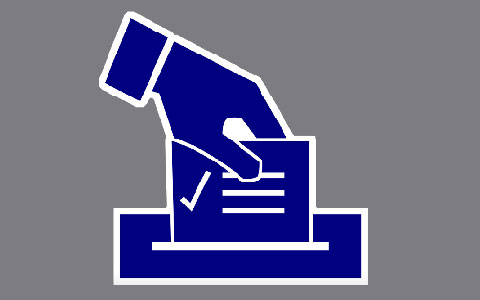

Our federal government has three parts. They are the Executive, (President and about 5,000,000 workers) Legislative (Senate and House of Representatives) and Judicial (Supreme Court and lower Courts).
The President of the United States administers the Executive Branch of our government. The President enforces the laws that the Legislative Branch (Congress) makes. The President is elected by United States citizens, 18 years of age and older, who vote in the presidential elections in their states. These votes are tallied by states and form the Electoral College system. States have the number of electoral votes which equal the number of senators and representatives they have. It is possible to have the most popular votes throughout the nation and NOT win the electoral vote of the Electoral College.
The Legislative part of our government is called Congress. Congress makes our laws. Congress is divided into 2 parts. One part is called the Senate. There are 100 Senators--2 from each of our states. Another part is called the House of Representatives. Representatives meet together to discuss ideas and decide if these ideas (bills) should become laws. There are 435 Representatives. The number of representatives each state gets is determined by its population. Some states have just 2 representatives. Others have as many as 40. Both senators and representatives are elected by the eligible voters in their states.
The Judicial part of our federal government includes the Supreme Court and 9 Justices. They are special judges who interpret laws according to the Constitution. These justices only hear cases that pertain to issues related to the Constitution. They are the highest court in our country. The federal judicial system also has lower courts located in each state to hear cases involving federal issues.
All three parts of our federal government have their main headquarters in the city of Washington D.C.

Laws begin as ideas. First, a representative sponsors a bill. The bill is then assigned to a committee for study. If released by the committee, the bill is put on a calendar to be voted on, debated or amended. If the bill passes by simple majority (218 of 435), the bill moves to the Senate. In the Senate, the bill is assigned to another committee and, if released, debated and voted on. Again, a simple majority (51 of 100) passes the bill. Finally, a conference committee made of House and Senate members works out any differences between the House and Senate versions of the bill. The resulting bill returns to the House and Senate for final approval. The Government Printing Office prints the revised bill in a process called enrolling. The President has 10 days to sign or veto the enrolled bill.
Is our Government Still for the People?
Should legislators be allowed to choose their voters?

Why is voter turnout so low in the United States and does it matter?
Money in Politics
Does Money Influence politics?